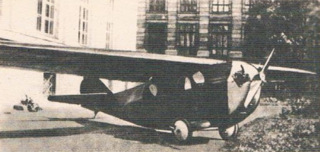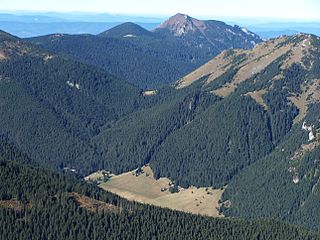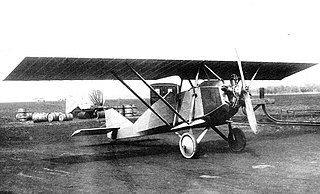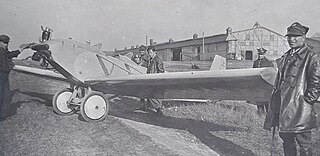
The Polish Air Force is the aerial warfare branch of the Polish Armed Forces. Until July 2004 it was officially known as Wojska Lotnicze i Obrony Powietrznej. In 2014 it consisted of roughly 16,425 military personnel and about 475 aircraft, distributed among ten bases throughout Poland.
RWD was a Polish aircraft construction bureau active between 1928 and 1939. It started as a team of three young designers, Stanisław Rogalski, Stanisław Wigura and Jerzy Drzewiecki, whose names formed the RWD acronym.

The RWD 1 was a Polish sports plane of 1928, a single-engine high-wing monoplane constructed by the RWD design team.

The Chief of State was the title of the head of state of Poland in the early years of the Second Polish Republic. This office was held only by Józef Piłsudski, from 1918 to 1922. Until 1919, the title was called the Provisional Chief of State. After 1922, the Polish head of state became the President of Poland.

The RWD 13 was a Polish touring plane of 1935, three-seater high-wing monoplane, designed by the RWD team. It was the biggest commercial success of the RWD.

The PZL-5 was a Polish two-seat touring and sports aircraft of 1930 constructed and produced by the PZL.
Doświadczalne Warsztaty Lotnicze (DWL) was the Polish aircraft manufacturer, active in 1933-1939. It was a home of the RWD construction team and manufactured aircraft under a brand RWD.
The Council of National Defense was an extraordinary temporary governmental body created by a decree of the Sejm of the Second Polish Republic, of 1 July 1920.

Gwiazda Polski was a balloon, which, according to the Polish planners, was going to reach the stratosphere, thus beating the 1930s high-altitude world record, established on November 11, 1935 by Albert William Stevens and Orvil Arson Anderson, in the Explorer II balloon. Stevens and Anderson ascended to the altitude of 22,066 m, the Poles wanted to reach the altitude of 30 kilometers. Polish crew, consisting of Captain Zbigniew Burzynski and Doctor Konstanty Jodko-Narkiewicz, attempted the stratospheric flight in The Star of Poland on October 14, 1938 in the Tatra Mountains, but the balloon caught fire when it was less than 100 feet above the ground.

The FBA 17 was a training flying boat produced in France in the 1920s.

The RWD 16bis and RWD 21 were Polish two-seat low-wing touring and sports planes of the late 1930s, constructed by the RWD bureau, sharing the same construction, main difference of the RWD 21 being a stronger engine.

The PWS 3 was a Polish sport aircraft, developed in 1927 by PWS, which remained a prototype.

The PWS-4 was a prototype Polish sports aircraft, developed in 1928 by Podlaska Wytwórnia Samolotów.

Andrzej Strug, real name TadeuszGałecki was a Polish socialist politician, publicist and activist for Poland's independence. He was also a freemason and declined the offer to join the prestigious Polish Academy of Literature, upset by official criticism of the movement.

Nikolai Vasilyevich Travin was an officer in the Red Army. He served during the Russian Civil War, First World War, Soviet westward offensive of 1918-19, Winter War and most notably in the Second World War where he commanded units in the Defense of Leningrad today known as St. Petersberg.

The Armed Forces of the Republic of Poland, popularly called Wojsko Polskie in Poland are the national armed forces of the Republic of Poland. The name has been used since the early 19th century, but can also be applied to earlier periods. The Polish Legions and the Blue Army, composed of Polish volunteers from America and those who switched sides from the Central Powers, were formed during World War I. In the war's aftermath, the Polish Army was reformed from the remnants of the partitioning powers' forces and expanded significantly during the Polish–Soviet War of 1920.

The Offierski O.2 was a one-off, two seat, low powered lightplane built in Poland on the late 1920s. It flew in 1928 but an old and unreliable engine prevented its development.
The Polish Air Defence Force - was one of the four branches of the Polish People's Army in the years 1962–1990, along with the Polish Land Forces, Polish Air Force and the Navy.















